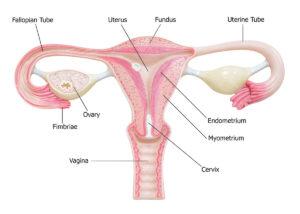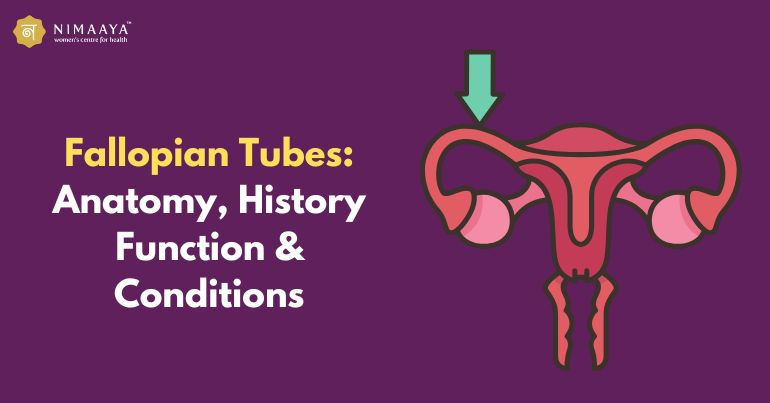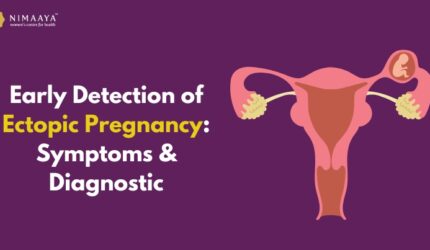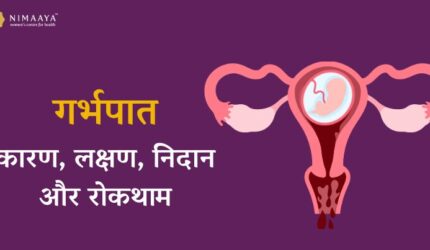The fallopian tubes, also known as uterine tubes or oviducts, are essential components of the female reproductive system. These slender, tubular structures play a crucial role in the process of fertilization and the transport of the egg from the ovary to the uterus. Understanding the anatomy, function, and associated conditions of the fallopian tubes is vital for comprehending female fertility and reproductive health.
What are the fallopian tubes?
Fallopian tubes are tubes of the female reproductive system. They connect the ovaries to the uterus and have a crucial function in the transportation of the ovum and fertilization.
Anatomy of the Fallopian Tubes

Fallopian tubes are paired structures closely extending from the uterus towards the ovaries measuring fallopian tube length about 10-12cm. Each tube is made up of four main portions and each portion has its specific structural and functional characteristics:
Infundibulum
It is the funnel-like segment closest to the ovary.
It captures the egg as it is released using finger-like projections known as fimbriae.
The infundibulum helps direct the egg into the tube.
Ampulla
It is one of the most extensive fallopian tubes parts.
Fertilization takes place here, with sperm and egg blending.
The mucosal folds in the ampulla make it conducive for interaction between gametes and for the embryo’s development.
Isthmus
A narrow muscular section between the ampulla and uterus.
Thick muscular walls push the fertilized egg towards the cavity in the uterus.
Interstitial (Intramural) Segment
It is the section that passes through the uterine wall into the cavity of the uterus.
The final pathway of the fertilized egg to implant in the uterus is this one.
Read More: बड़े गर्भाशय (Bulky Uterus in Hindi): लक्षण, कारण और उपचार
Histology of the Fallopian Tubes
The wall of the fallopian tube consists of three main layers:
Mucosa
The innermost layer has ciliated columnar epithelial cells that line it. Cilia are the agents that perform the movement of the egg and sperm. Secretory cells in the mucosa produce secretory fluids that nourish gametes and embryos.
Muscularis
The muscle layer also is a middle layer and has smooth muscle fibres of circular and longitudinal arrangement. The peristaltic contraction helps move the egg towards the uterus.
Serosa
The outermost layer is made from connective tissue and then covered over by the peritoneum. Structural support and protection are provided.
Fallopian tube function
Some functions of the fallopian tubes regarding reproductive activity are:
Egg Capture
The fimbriae sweep over the ovary at times of ovulation, catching the released egg into the infundibulum.
Sperm Transport
Transport of sperm up into the uterus and into the fallopian tubes, where fertilization would take place.
Fertilization
Ampulla is the area where the sperm and egg meet, resulting in the zygote formation.
Embryo transport
It transports a fertilized egg (zygote) to the uterus due to ciliary action and muscle contractions.
Nutrient support
Mucosal secretions within the tube nourish the egg, sperm, and embryo during transit.
Conditions Affecting the Fallopian Tubes
Fertility largely lies in having healthy fallopian tubes. Several conditions can compromise the functioning of the organs:
Ectopic Pregnancy
This is one in which the fertilized egg does not attach itself to the uterus but into the fallopian tube instead.
Symptoms are abdominal pains and vaginal bleeding.
It is a medical emergency requiring appropriate fallopian tube treatment.
Tubal Blockage or Obstruction
Most commonly caused by pelvic inflammatory disease (PID), endometriosis, previous surgeries, and other diseases.
Thus, it stops egg and sperm from meeting thus creating complications in conceiving.
Hydrosalpinx
A state under which the tube has filled up with fluid, mostly by way of either infection or inflammation.
The drainage of the egg is affected and there is a negative effect on fertility.
Salpingitis
Inflammation of fallopian tubes is mostly due to sexually transmitted infections (STIs).
Chronic salpingitis may lead to scarring and blockage within the tubes.
Congenital Anomalies
Very rarely- narrows that one is born with e.g. absent or malformed tubes-such malformations can result in infertility.
Malignancy of Fallopian Tube Cancer
Very rare cancer but a very serious one.
Abdo pain, abnormal bleeding, and pelvic masses may all be symptoms of such a cancer patient.
Diagnostic Techniques
There are several methods available for checking the health status and function of the fallopian tubes:
- Hysterosalpingography (HSG)- A radiographic technique that injects dye into the uterus and tubes to check for blockages.
- Sonohysterography-A technique that uses saline and ultrasound to assess tubal patency.
- Laparoscopy-Minimal surgery that gives direct sight into the fallopian tubes.
- Biopsies of the Tubes-Most rare, but may be done to determine the histology of the tube when any disease is suspected.
Treatments for Tubal Conditions
Fallopian tube-related conditions vary in their management according to their different diagnoses:
Surgical Procedures
Salpingectomy: Removal of a ruptured tube in hydrosalpinx or ectopic pregnancy.
Tuboplasty: Surgical operations performed on obstructed or damaged tubes to repair the tubal pathology and restore fertility.
Artificial Reproductive Technology (ART)
In vitro fertilization is the procedure that bypasses the fallopian tubes by directly placing fertilised embryos in the uterus.
This is the most effective intervention for those who suffer from tubal infertility.
Antibiotic Therapy
It treats infections such as PID and prevents further complications.
Importance of Fallopian Tube Health
The health of the fallopian tube matters for natural conception. Furthermore, it is tubal damage or dysfunction that would be the primary cause of female infertility. It indeed calls for attention to the diagnosis and intervention. Women with particular risk factors such as pelvic infections, endometriosis, or previous surgeries should present early for regular checks to secure reproductive health.
Conclusion
Fallopian tubes form an important part of the machinery involved in reproduction. They are expectant waiting chambers for the oocyte during the time of its passage from the ovary to the uterus, where it would be met by sperm. They accommodate the fertilisation process and are the conduits through which the fertilised embryo is transported to the uterus, where it eventually finds a suitable environment for implantation. Though their size is small, their effect on fertility is huge.
Women have been given more hope in advanced techniques like IVF to cure their infertility. Nimaaya IVF Center is well-recognized for its expertise in redundancy coupled with great care, as always, in the provision of contemporary options for couples desiring parentage and parenthood. Centres such as Nimaaya use innovative techniques and personalized care to transform lives and bring to fruition the dream of parenthood.
FAQ
Q: How long are the fallopian tubes?
Each fallopian tube is approximately 10–12 cm in length.
Q: What happens when the fallopian tubes are blocked?
Blocked fallopian tubes prevent the egg and sperm from meeting, and cause infertility. It can be treated either through surgery or through assisted reproductive technologies like IVF.
Q: Can damaged fallopian tubes be repaired?
Yes, in some cases – tuboplasty can be defined as the surgical repair of tubes that are damaged or blocked. However, successful surgeries are determined by the extent of damage.
Q: What causes fallopian tube damage?
Common causes includePelvic inflammatory disease (PID), endometriosis, previous surgeries in the abdomen or pelvic region, sexually transmitted infections (STIs), congenital abnormalities.
Q: Are there any symptoms associated with the damage to the fallopian tube?
These include: several conditions develop Pelvic or abdominal pain; unusual vaginal discharge; difficulty conceiving; and symptoms of ectopic pregnancy: severe pain and bleeding.
Q: Is IVF the only solution for tubal factor infertility?
It is also most probably the surest alternative because it does not involve the fallopian tubes but goes straight into the uterus.



